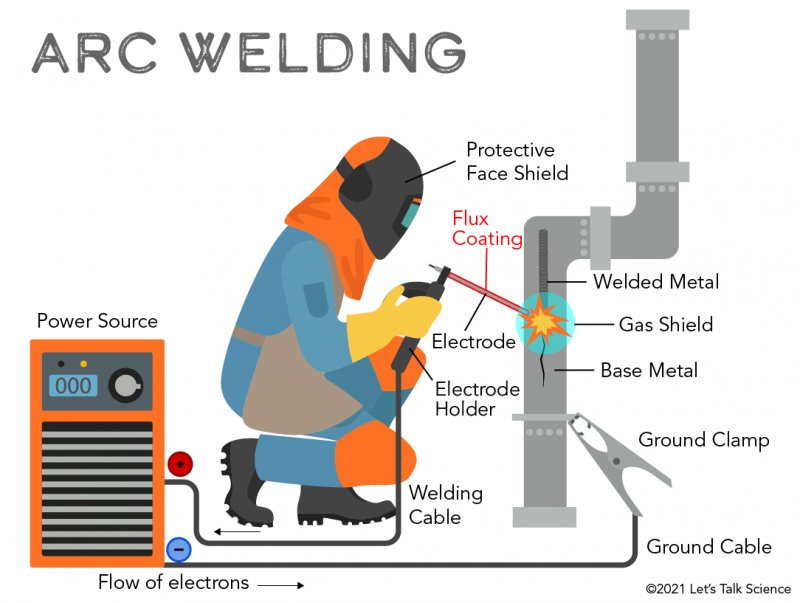Mastering Welding WPS Standards: Best Practices and Techniques for High Quality Welds
In the realm of welding, grasping Welding Procedure Specification (WPS) requirements is an important component that straight influences the high quality and stability of welds. Complying with these criteria ensures consistency and integrity in welding outcomes. Nonetheless, achieving quality in welds surpasses merely comprehending the requirements; it entails carrying out ideal practices and strategies that raise the craft to a level of precision and skill that sets apart the average from the outstanding. As we browse via the ins and outs of welding WPS requirements, uncovering essential insights and strategies for attaining top-tier welds will certainly be critical for welders seeking to excel in their craft and create welds that stand the examination of time.
Understanding Welding WPS Standards

Understanding WPS standards is essential for designers, examiners, and welders included in welding operations. By adhering to WPS standards, welders can produce welds that fulfill the needed mechanical homes and architectural integrity. Assessors rely upon WPS paperwork to confirm that welding procedures are being complied with properly which the resulting welds are of excellent quality. Designers utilize WPS criteria to develop welding treatments that make sure the sturdiness and dependability of bonded structures.


Necessary Tools for Top Quality Welds
Understanding welding WPS requirements is necessary for welders to efficiently use the vital devices required for generating quality welds. The kind of welding device needed depends on the welding process being used, such as MIG, TIG, or stick welding. Cable brushes and damaging hammers are vital for cleaning the weld joint prior to and after welding to remove any kind of contaminations that could affect the top quality of the weld.
Secret Techniques for Welding Success
To achieve welding success, one need to grasp the essential techniques necessary for producing premium welds. Maintaining a secure welding navigate to this site and a stable hand placement throughout the procedure is vital to accomplishing accuracy and consistency in the welds. By grasping these vital strategies, welders can raise the quality of their job and achieve welding success.
Ensuring Conformity With WPS Criteria

In addition, welders need to undergo training to familiarize themselves with the WPS requirements relevant to their work. Normal audits and examinations need to be conducted to validate that welding activities straighten with the suggested WPS guidelines. Additionally, maintaining comprehensive documents of welding specifications, equipment calibration, and inspection results is more information vital for showing compliance with WPS requirements - welding WPS. By faithfully adhering to WPS criteria, welders can ensure that their job satisfies the needed high quality levels and adds to the total success of the welding task.
Troubleshooting Common Welding Issues
To resolve this, making certain proper cleaning of the base steel before welding and making use of the proper protecting gas can substantially minimize porosity. Furthermore, distortion, splitting, and spatter are typical welding difficulties that can be alleviated with appropriate joint prep work, constant warmth control, and picking the suitable welding consumables. By extensively comprehending these typical welding concerns and their origin creates, welders can successfully repair problems and attain high-quality welds.
Conclusion
Finally, understanding welding WPS criteria calls for a detailed understanding of the standards, utilizing crucial tools, and carrying out crucial techniques for effective welds. Making sure compliance with WPS requirements is crucial for creating high quality welds and preventing common welding problems. By complying with ideal practices and methods, welders can accomplish constant and trustworthy lead to their welding tasks.
In the world of welding, grasping Welding Treatment Requirements (WPS) criteria is a vital element that straight affects the quality and honesty of welds.When delving right into the realm of welding techniques, an important facet to comprehend is the relevance and ins and outs of Welding Treatment Specification (WPS) criteria. WPS criteria give an in-depth standard for welding procedures, making sure uniformity, quality, and security in the welding procedure. The type of welding maker needed depends on the welding procedure being utilized, such as MIG, TIG, or stick welding.Achieving welding success with the mastery useful link of key techniques requires a complete understanding and adherence to Welding Procedure Specification (WPS) requirements.